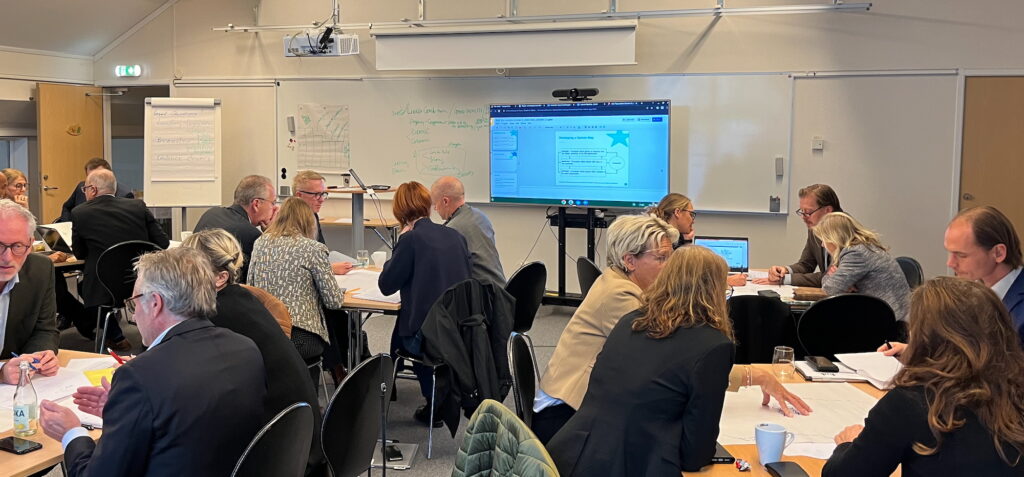Leadership’s Learning System

Many leadership teams begin by establishing their own learning systems. David A. Garvin defines a learning organization as “an organization skilled at creating, acquiring, and transferring knowledge, and at modifying its behavior to reflect new knowledge and insights.” A learning system comprises processes, practices, and artifacts that facilitate leaders in acquiring new ideas and concepts, applying them to results-driven improvement work. It supports the defining, testing, learning, and adapting phases as leaders innovate, design, and redesign work systems.
Peter Senge describes learning organizations as places “where people continually expand their capacity to create the results they truly desire, where new and expansive patterns of thinking are nurtured, where collective aspiration is set free, and where people are continually learning how to learn together.”
Educating the leadership team on the Science of Improvement and the Quality as an Organizational Strategy (QOS) framework is a beneficial starting point. This involves introducing new knowledge, learning collectively, applying that learning to organizational work, debriefing on outcomes, and adapting based on insights gained. A structured monthly program can facilitate this process, incorporating book studies, instruction, practical exercises, and QOS applications. An example of a first-year QOS exploration schedule is as follows:
Month 1: Introduction to QOS. Leaders complete and review their initial QOS assessment.
Month 2: Initiation phase. Leaders select a portfolio of improvement projects for learning.
Month 3: Begin a four-part series on the Science of Improvement, starting with appreciation of a system. Leaders also review Improvement Project #1 and assess the organization’s purpose.
Month 4: Continue exploring the Science of Improvement, focusing on knowledge about variation. Leaders review Improvement Project #2 and further define the organization’s purpose.
Month 5: Study the psychology component of the Science of Improvement. Leaders review Improvement Projects 3, 4, and 5.
Month 6: Conclude the introduction to the Science of Improvement with the theory of knowledge. Leaders review remaining improvement projects.
Month 7: Learn about leading with QOS. Leaders establish a regular schedule for reviewing and learning from the organization’s improvement projects.
Month 8: Develop a systems perspective by viewing the organization as a system; continue reviewing improvement projects.
Month 9: Conduct a working session to build the organization’s initial system map; review improvement projects.
Month 10: Advance the systems view by learning about system measurement; review improvement projects.
Month 11: Analyze the organization’s current measures using Shewhart charts; review improvement projects.
Month 12: Evaluate the current portfolio of improvement projects. Leaders reflect on the year’s learning through the QOS framework.
This schedule aligns with Phase 1 of developing QOS. The learning system begins with leadership education and evolves to include continuous evaluation, organization-wide commitment, and the integration of quality as the core management approach.
While it’s tempting to approach this work as merely educational or theoretical, the true value lies in applying these theories and methods to achieve sustainable organizational improvements. Enhancing processes, services, or products within the system is essential for organizations pursuing QOS. Engaging directly with current work provides an optimal starting point for understanding and improving the organizational system.
Sources:
David A. Gavin, “Building a Learning Organization,” Harvard Business Review, July 1, 1993, https://hbr.org/1993/07/building-a-learning-organization.
Senge, The Fifth Discipline: The Art and Practice of the Learning Organization, 1.